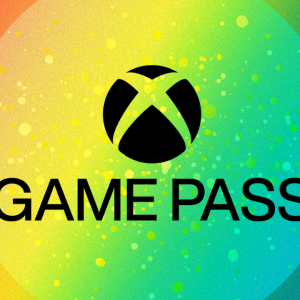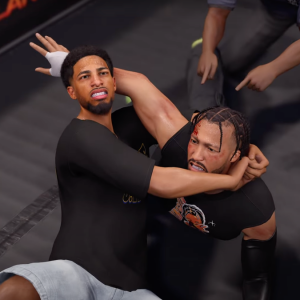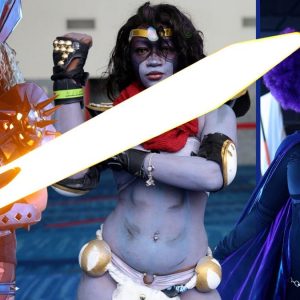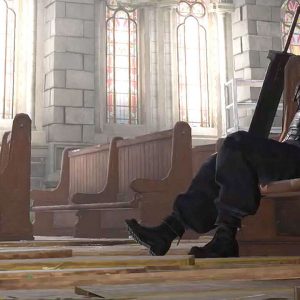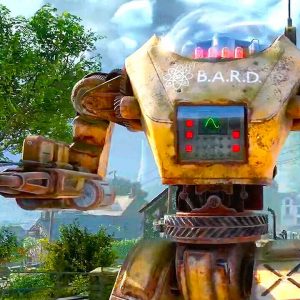pulls from anywhere and everywhere to stock its very fun (if fairly simple) co-op brawler with crowd-pleasing moments.
The story itself is one we’ve heard a lot lately: Thanos is hunting for the Infinity Stones and you have to find all six before he does. It’s a new telling of some extremely well-tread ground, but the writing and voice acting still manage to capture the funny, self-deprecating, and occasionally overdramatic attitude I love about big comic book stories. The campaign also acts as a tour of Marvel’s greatest hits, taking you to lovely renditions of places like Avengers Tower, The Raft prison, and even the wonderfully nostalgic Xavier Institute.

In the tradition of the original decade-old games in this series, Ultimate Alliance 3 is a totally linear button mashing beat-’em-up. You run through locations in order, strung together by plenty of amusing and well-animated cutscenes, with only some lightly hidden collectibles to pull you off the main path. Thankfully, these environments are dotted with plenty of mid-level boss fights and loads of quippy hero banter that kept me smiling even when the straightforward levels were otherwise relatively predictable.
Everyone is Here!
And, of course, within those locations are a whole boatload of heroes – far more than you’ll actually play as during its 12-hour campaign. There are more than 30 playable characters to swap between to make up your team of four, and lots more will drift in and out of the story as NPCs who fight alongside you or point you toward the next encounter. While I would have liked to be able to control some of those support characters like Beast, the sheer volume of heroes (and villains) on display here made Ultimate Alliance 3 feel appropriately epic.
Besides, it’s not like there aren’t enough playable characters to choose from. All of the big names like Iron Man and Captain America are here, but it was also exciting to see both some of the smaller characters like Ms. Marvel as well as longtime X-Men favorites like Nightcrawler join the fray alongside the MCU regulars. Each of them has a set of four playstyle-defining abilities that unlock quickly as they level up, and while there’s a bit of overlap between similar characters like Peter Parker (who is even voiced by the PS4 Spider-Man’s Yuri Lowenthal), Miles Morales, and Spider-Gwen, they each still have little twists that set them apart, like Gwen’s widespread webs or Miles’ shock-based attacks.
Each hero also has a ridiculously over-the-top Extreme move that can fill the screen with damage. One of my favorites of these is Venom’s, in which melts into a puddle of black symbiote ooze before emerging from the center as a giant, fanged mouth like a scene out of Jaws. I love that you can easily chain these Extreme moves together with the press of a button if you had more than one character charged at the right moment, though using all four at once was the only time I occasionally saw Ultimate Alliance 3’s frame rate take a hit (which is understandable given the visual chaos they can cause).
“
The only drawback with having so many character choices is that I constantly wanted to change up my team and play around with everyone I could. While there’s nothing stopping you from playing with all these action figures, it’s discouraged slightly by the character-specific experience system. When I changed Captain Marvel out for The Wasp in Avengers Tower, or Spider-Gwen for Psylock to take down some Sentinels, it meant the experience gains were spread in a thin layer across my roster, leaving them underleveled as I went forward.
There is an Alliance Enhancement skill tree that offers global stat buffs to all your heroes, but it didn’t feel like it mitigated this issue much. I eventually had to start focusing more on a select cast (or using newly unlocked characters who start at levels appropriate to the area you are in) which inevitably left some of my favorites like Miles and Venom in the dust in the late game. I found myself occasionally using characters just because they were a high level, not because I particularly liked them – looking at you, Ghost Rider.

You can get around that by grinding your squad through previous chapters or completing the optional Infinity Trials for XP Cubes to give them a boost, but I didn’t really want to since the story is simply more fun. I ended up sticking with the same team for the last few chapters – Wolverine, Dr. Strange, Storm, and the absolutely vicious Black Panther – both because I liked how they worked together and to make sure they were strong enough to avoid grinding entirely.
Bamf, Thwip, Snikt!
Ultimate Alliance 3’s combat is fairly simplistic, with the strategy coming more from timing, team composition, and Energy management than actual combat skill. Apart from their four abilities, every hero has a light attack that you can string together, as well as a heavy attack that lands as a single big hit. There’s also a mid-air attack, a block, and a dodge, but otherwise that’s pretty much it.
“
There are no fancy button combos to memorize or special attack patterns to use, so you’ll be spamming that light attack a lot in between abilities. That can definitely get stale all on its own, and while the enemies you face will change visually in interesting and exciting ways – you might be fighting Kree soldier in one level and Hand ninjas in another – the differences in their behavior and attacks never really altered the way I went about punching them to a pulp
Larger generic enemies and mid-level bosses like Mysterio, Nebula, or Bullseye make things more interesting with a purple Stagger bar; instead of just whacking them, I had to use heavy attacks and abilities with high Stagger damage to take that bar down. Once it’s empty, you have a brief window to land a Synergy ability – essentially two heroes using complementary abilities at the same time, which is made easier through button clear button prompts – to stun them for a longer period, during which they take considerably more damage. Your abilities all cost Energy, so figuring out the right balance of using it to Stagger and having some left over for a synergy stun was an interesting puzzle that often changed based on the level I was in or the heroes I was using. Fights are still very mashy, and I definitely wish characters had more than their extremely simple two-button basic attacks, but I still found myself consistently engaged in Ultimate Alliance 3’s combat for far longer than I expected.

That said, those puzzles are only truly challenging to solve on the Mighty difficulty setting, with the Friendly mode letting you get away with a bit more of an ability-spamming approach. Apart from big, villainous fights that turn up the heat, Mighty isn’t crazy hard or anything, but it actually forces you to play smart. Bosses like Kingpin or Ultron can easily eat up your three hero revives, even if most groups of basic enemies can still be torn through like tissue paper – which makes a certain amount of sense, because where’s the fun in being Hulk if you struggle to take down a group of ninjas?
“
Part of that difficulty is also influenced by how many people you are playing with. Ultimate Alliance 3 can be played solo but it feels like it was really meant to be played in co-op with up to four players, either locally or online (though we weren’t able to test out the online functionality ahead of this review). Combat gets both easier and harder in co-op, depending on the situation: your teammates generally make smarter decisions than the AI but synergy moves and attack timings are often trickier to coordinate than it is with the simple button inputs it takes while playing alone.
You can drop in and out of co-op at will, but be warned that Ultimate Alliance 3’s Stagger system (while a good addition overall) actually makes it a harder game for a visiting friend to blindly pick up and play. The concept is taught well in the first level, but isn’t intuitive or easy to read at a glance if someone joins you after that. I found players who jumped in to join me in the middle of a mission wouldn’t really understand why just smashing buttons wildly wasn’t working so well. It especially didn’t help halfway through the campaign when a big chunk of my roster was underleveled, often meaning the character someone wanted to play was missing abilities or just sort of weak.
It can still be chaotic, snack food-like entertainment regardless, but played with a group that knows what they are doing Ultimate Alliance 3 can become a delightful coordination challenge. There’s lots of calling out targets, working together to Stagger specific enemies while you have a synergy attack waiting in the wings. The only real enemy of this experience is a fairly predictable one: the camera, which frequently felt too restrictive and zoomed in when your co-op party moves in opposite directions, and was frustratingly stubborn in a handful of tight hallways.

While co-op seems to be the intended way to play (as seen particularly in its boss fights that often ask you to multitask), I actually really loved playing alone as well – I might have even liked it more at times. There’s an alternate camera option this way called Heroic that drops the viewing angle down for more of a third-person action feel, and I absolutely preferred it to the default zoomed-out perspective. Ultimate Alliance also has pretty decent AI partners, swapping between heroes on your team is fast and seamless, and using synergy abilities is made super simple, all of which meant controlling four heroes at once kept battles fresh far longer than just sticking with just one character for a long period of time.
We’re In the Endgame Now
Supporting your heroes’ literal journey are a plethora of stats to upgrade and a borderline excessive number of currencies to spend. You can use different pools of points you earn to rank up individual abilities, improve the stats of every member of your alliance via a sprawling skill tree, and equip special ISO-8 crystals for even more stat boosts – which can themselves be upgraded to improve their bonuses. With six different stats that govern attack, defense, health, and Energy there is a ton to dig into here, and min-maxers will have a field day doing just that with great success – but that doesn’t mean any one upgrade is very exciting because of how incremental the vast majority are.
Essentially every form of upgrade or modification in Ultimate Alliance 3 is stat-based, which means that they are almost entirely invisible to you while you are actually fighting. For instance, you could buy a skill that gives your heroes 40 more Strength (even though most heroes’ Strength values are in the thousands), get a team bonus for using two of the Defenders at once for plus 2% Durability, or upgrade a basic ISO-8 crystal to give a hero 5% more Vitality instead of… 4%. Their combined effect will be practically unnoticeable. Hooray!

The ability rank-ups are also unimaginative. Every single ability – whether it’s shooting webs at enemies as Spider-Man, zapping them with lighting as Thor, or dropping giant fidget spinners on their heads as The Wasp – gets a reduced Energy cost at rank 2, increased damage at rank 3, and usually increased stagger damage at rank 4, though sometimes that last one will be a bit more tailored to the ability itself. No matter how detailed or extensive all of these upgrade systems are, these purely number-based buffs are just boring since they don’t change the way any of your heroes play.
“
Hidden in that sea of marginal stat boosts are some actually interesting upgrades, but they are few and far between. By far the coolest one I unlocked was a skill that healed my heroes for 3% of the damage they dealt during Extreme attacks – a significant amount considering they can do hundreds of thousands of points of damage. That was an actual, tangible improvement I could see in the field, and it did actually change my thinking in fun ways as I started using Extreme attacks to save heroes on the cusp of death instead of just take down big baddies.
But by the end of the roughly 13 hours it took me to complete Ultimate Alliance 3’s story I had unlocked only about a fifth of its gargantuan skill tree. Beating the campaign unlocks an even harder mode, called Superior, to replay on, and beyond that are the high-level Infinity Trials to test your mettle against for bonus unlocks.
The Trials usually have you replay bosses or sections from the campaign with a twist to the rules – sometimes you have reduced damage on anything but abilities or synergy attacks, or maybe there’s a timer running that only refills when you defeat enemies. A fair number of these are a higher level than your heroes will likely be by the end of one run through the campaign, encouraging you to play again or level up further through easier Trials to get their rewards.
Those rewards are usually Ability Orbs used to rank up moves, XP Cubes to level up characters, or alternate outfits – though the outfits are a massive missed opportunity as they are slow to unlock and have so far been limited to a single, uninspired recolor for each hero’s default costume, like taking the red stripes of of Captain America’s suit. You can even unlock a few extra playable characters here like Elektra, which I imagine is to keep things fresh in the post-game – you won’t unlock new ones anymore just by playing through the campaign again, even on Superior difficulty.
The massive skill tree and extensive amount of number-crunching upgrades available feel like they were designed for all these post-game tasks. There is fun to be had in trying to craft that perfect team build as you take on the hardest content Ultimate Alliance 3 has to offer – I enjoyed doing a bit of that myself for some of the tougher bosses and trickier Trials – it’s just hard to see the results of that work, especially on your first playthrough. Instead, the spice is found in the variety between heroes, not how those heroes change… because they don’t, they just get bigger numbers. And while I’m certainly still interested in diving back into some of those harder challenges, I don’t exactly know how long “harder” alone will keep me hooked.

